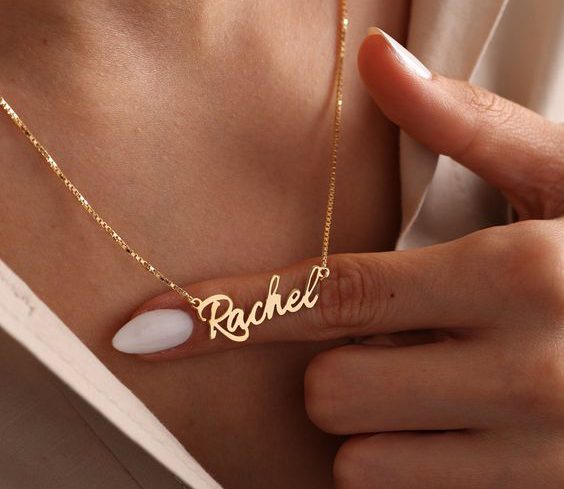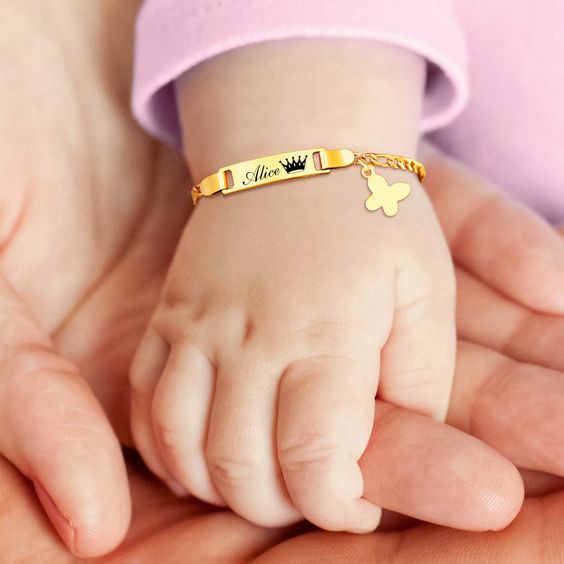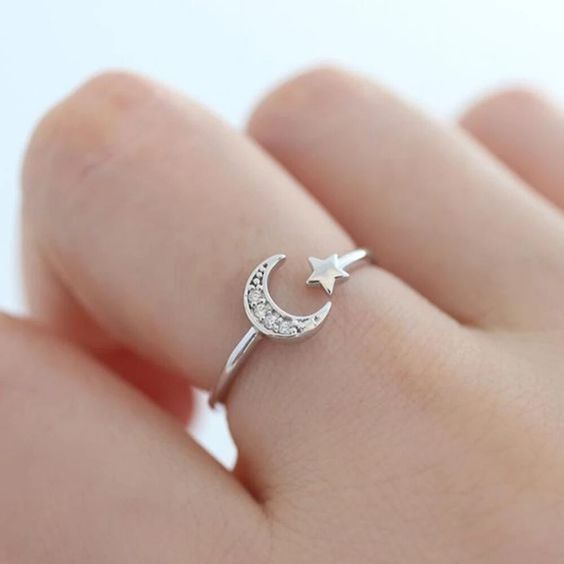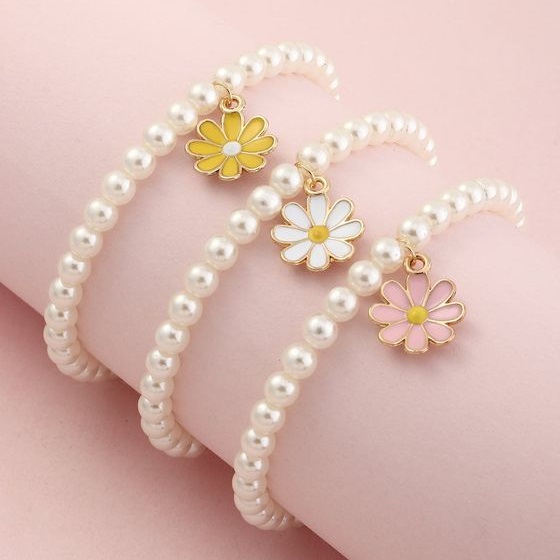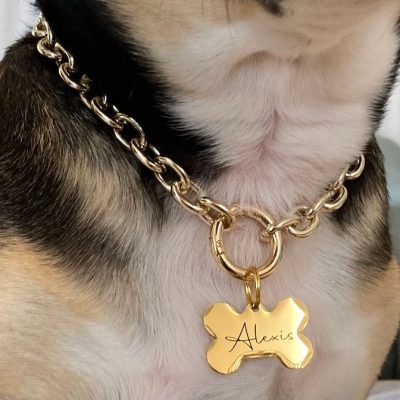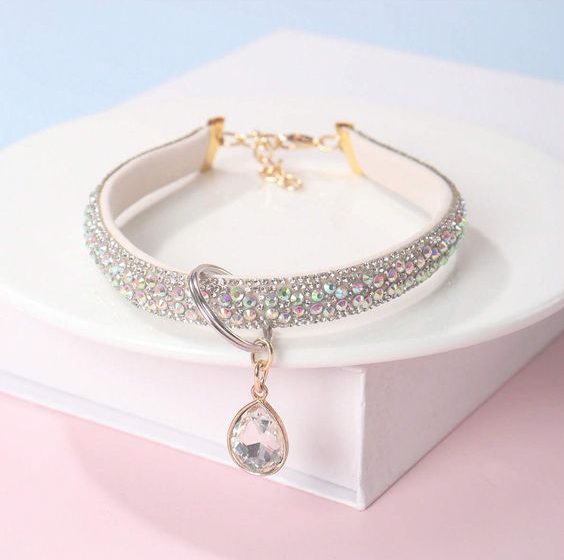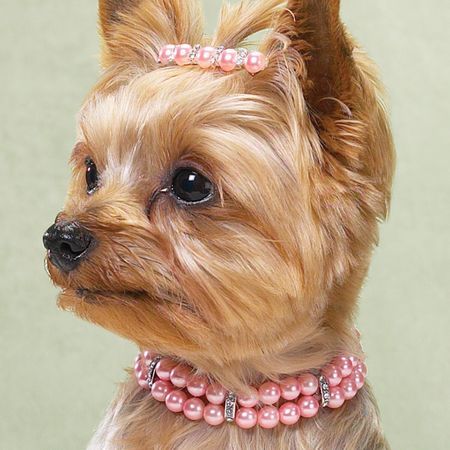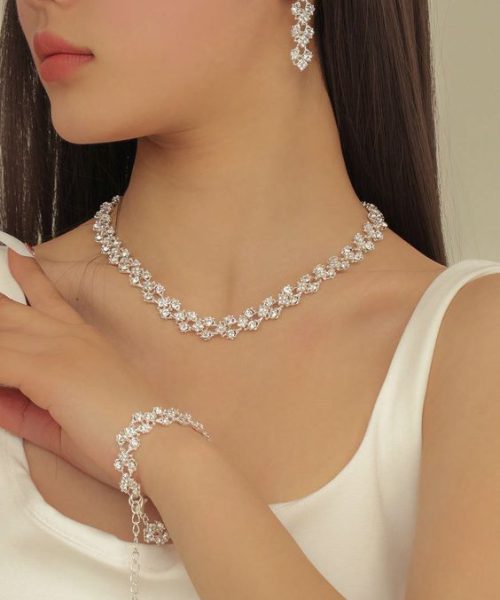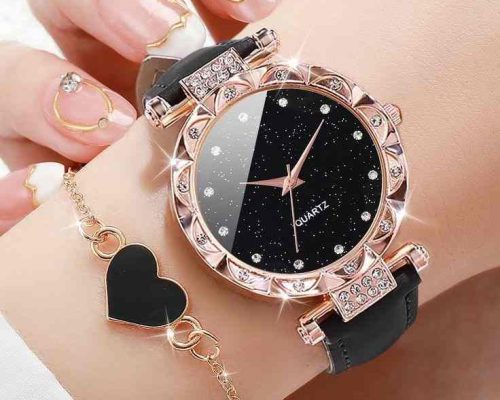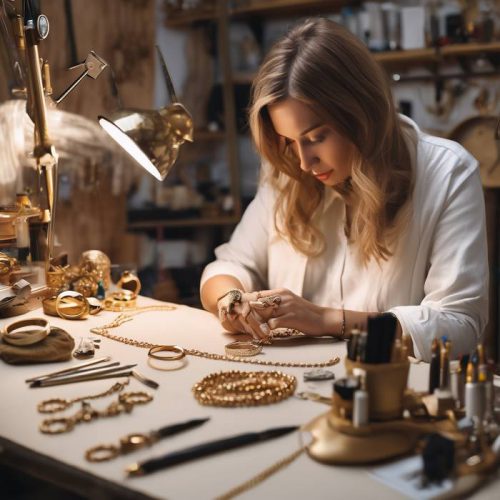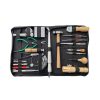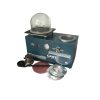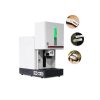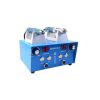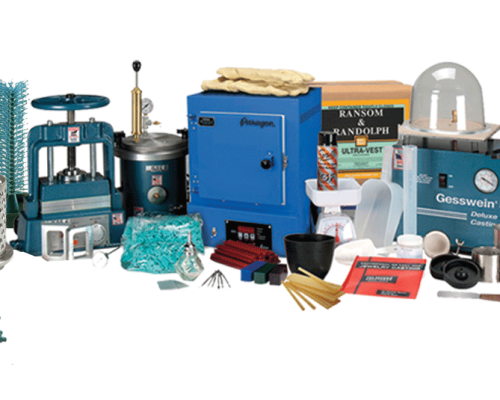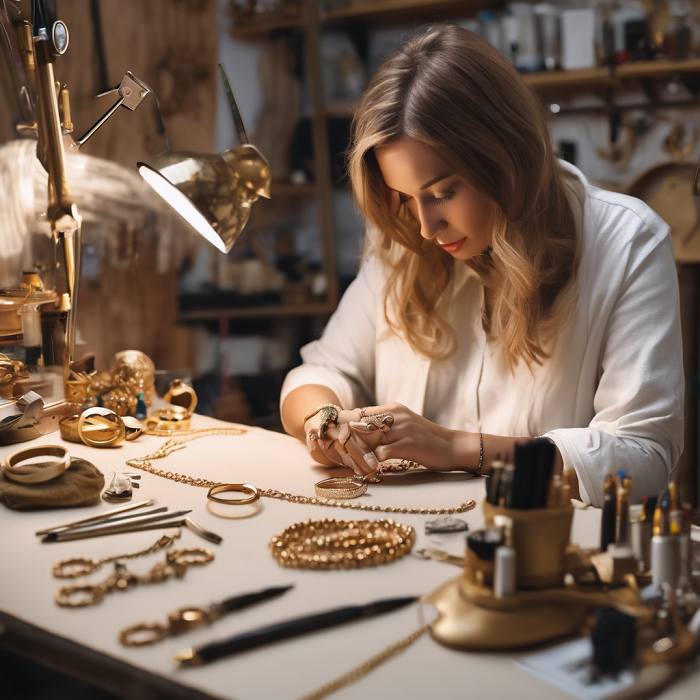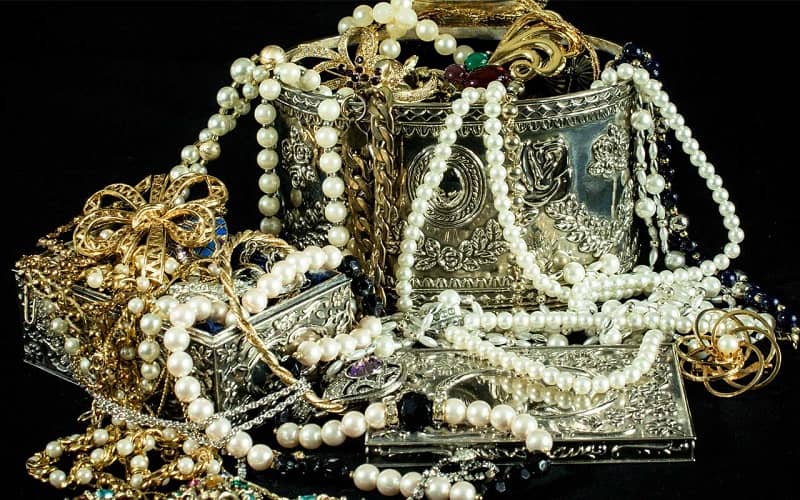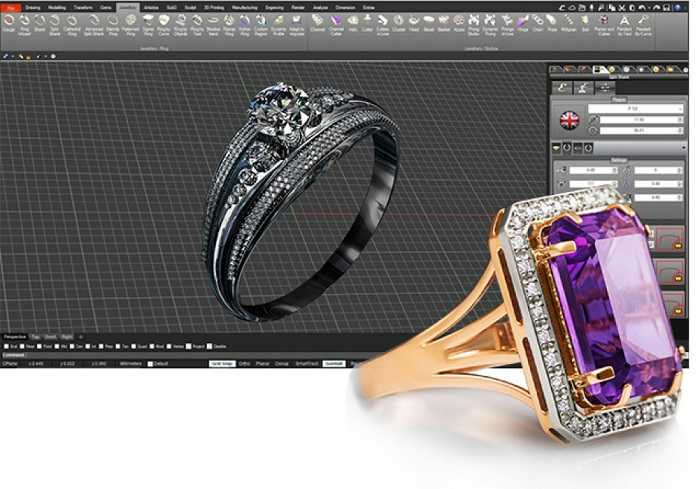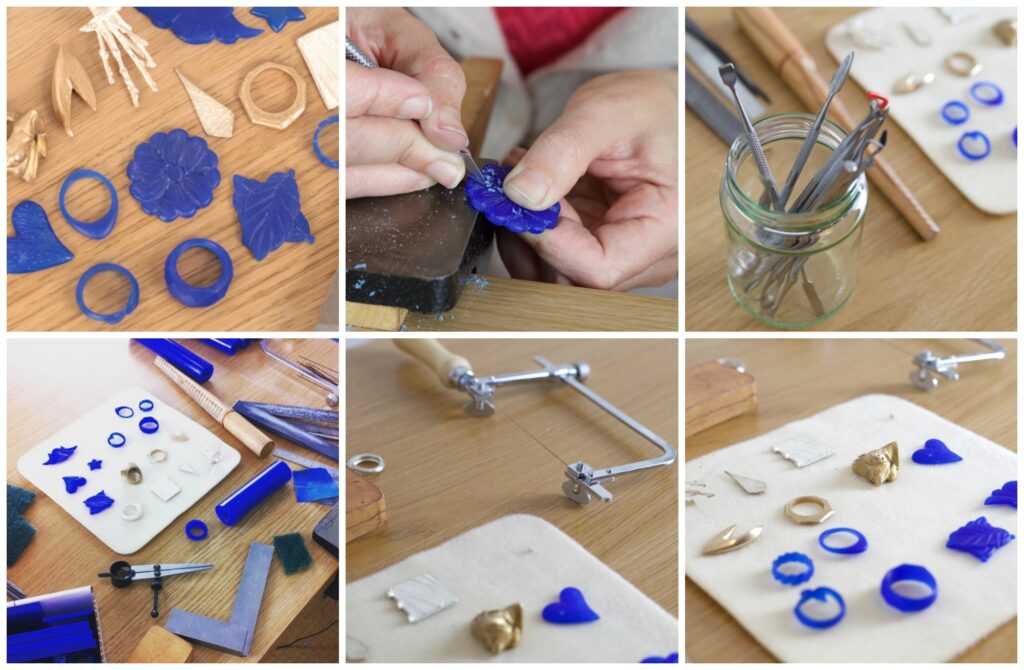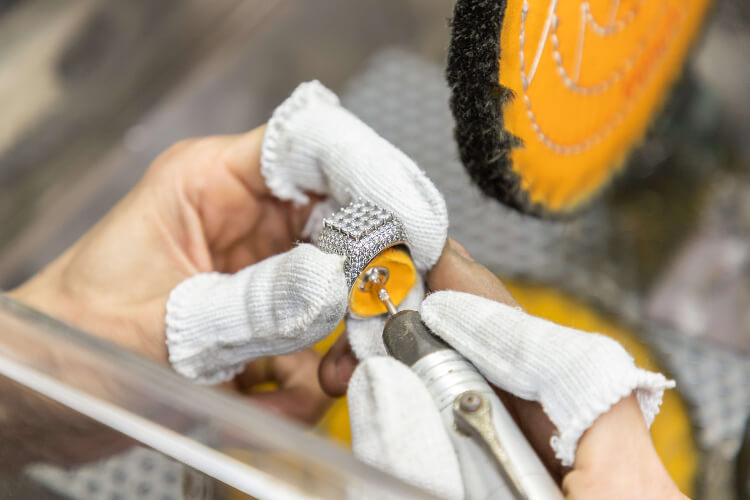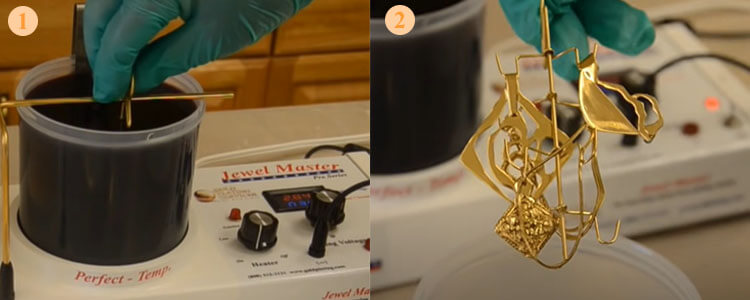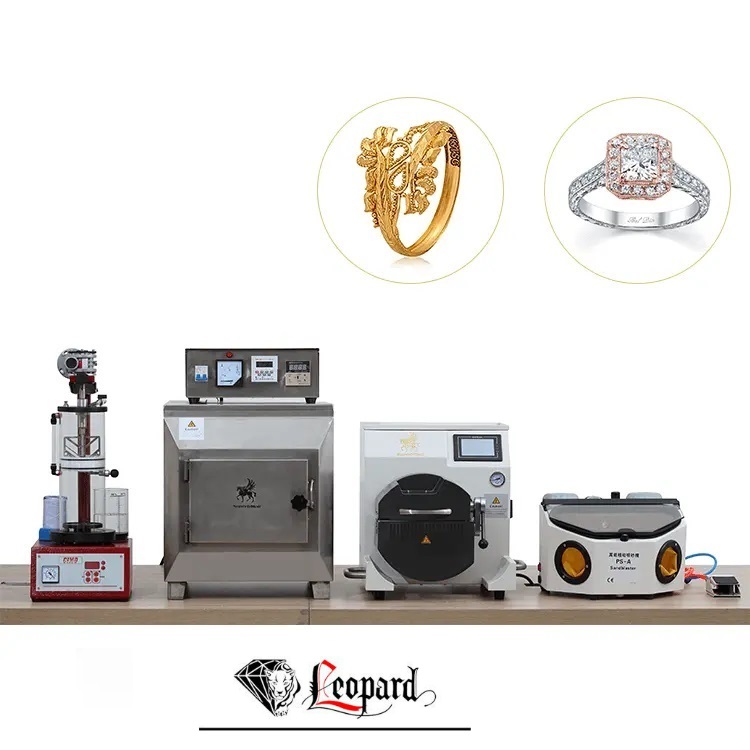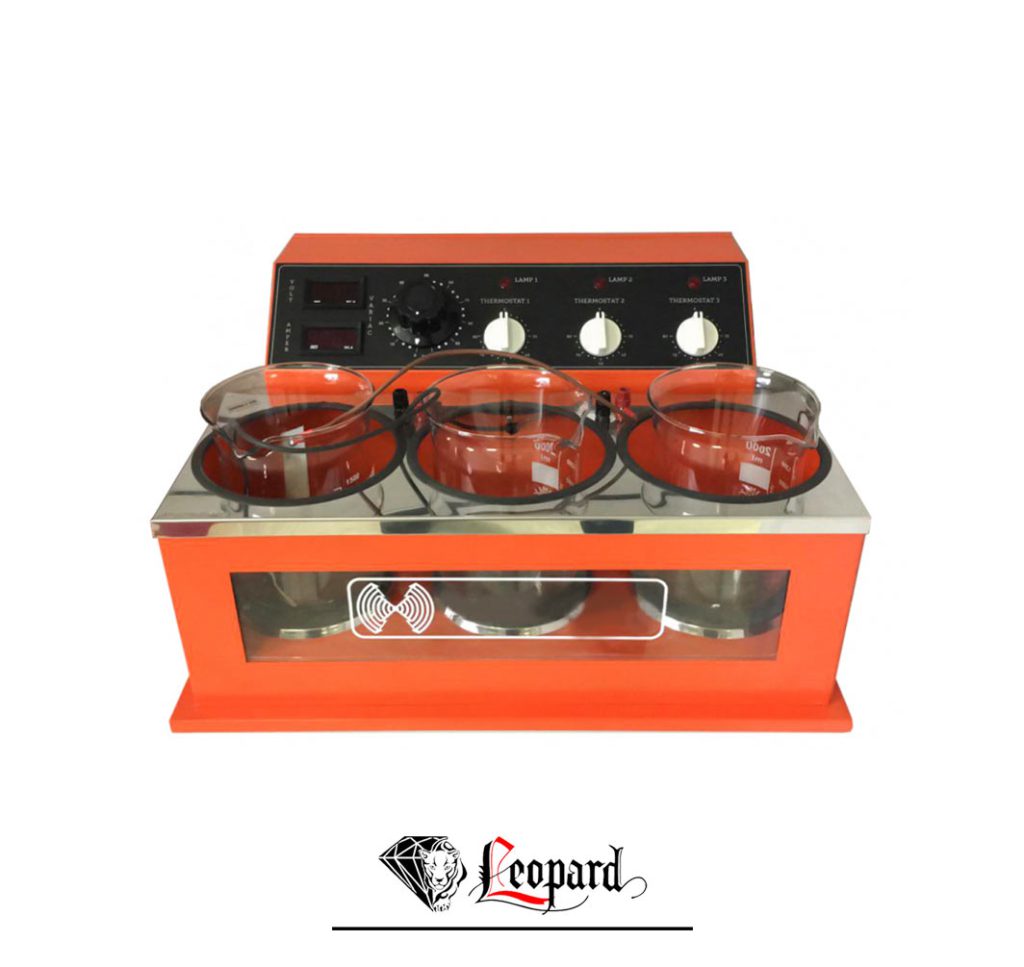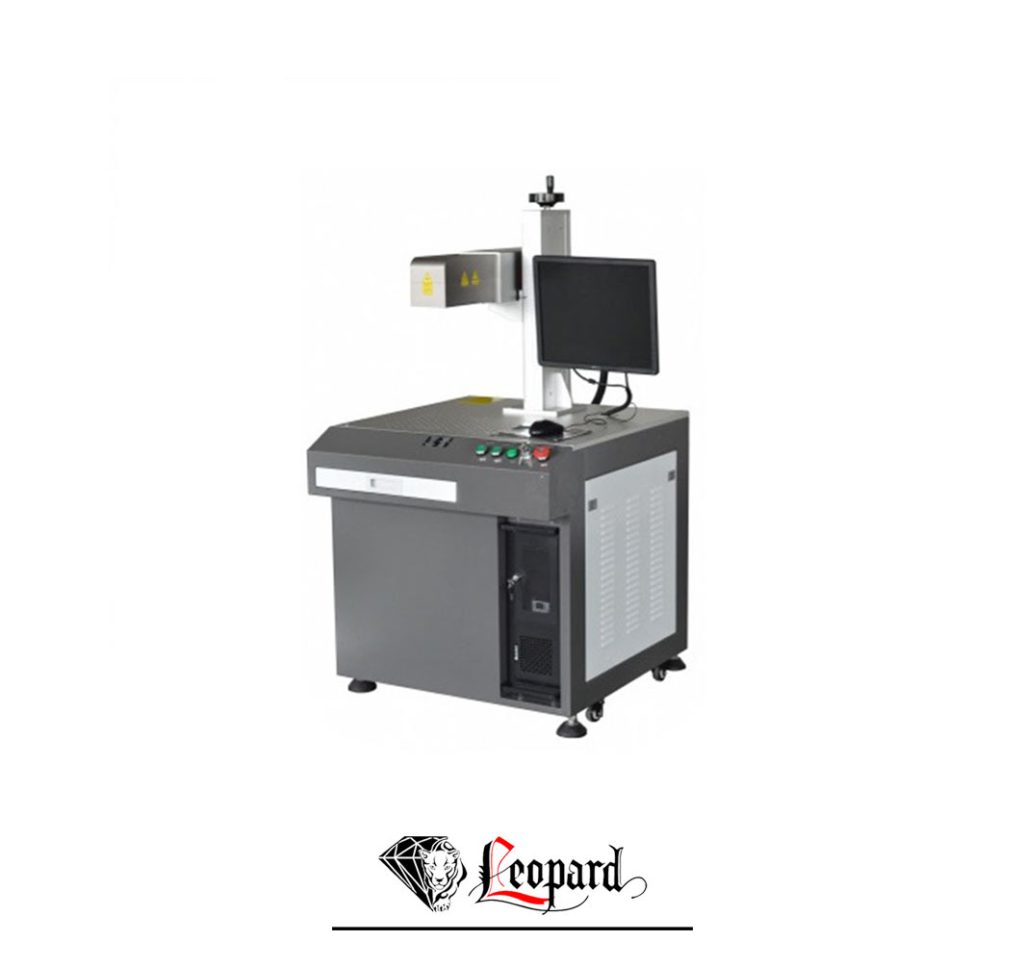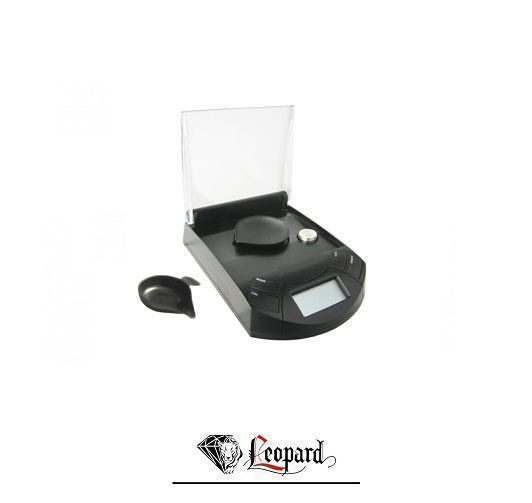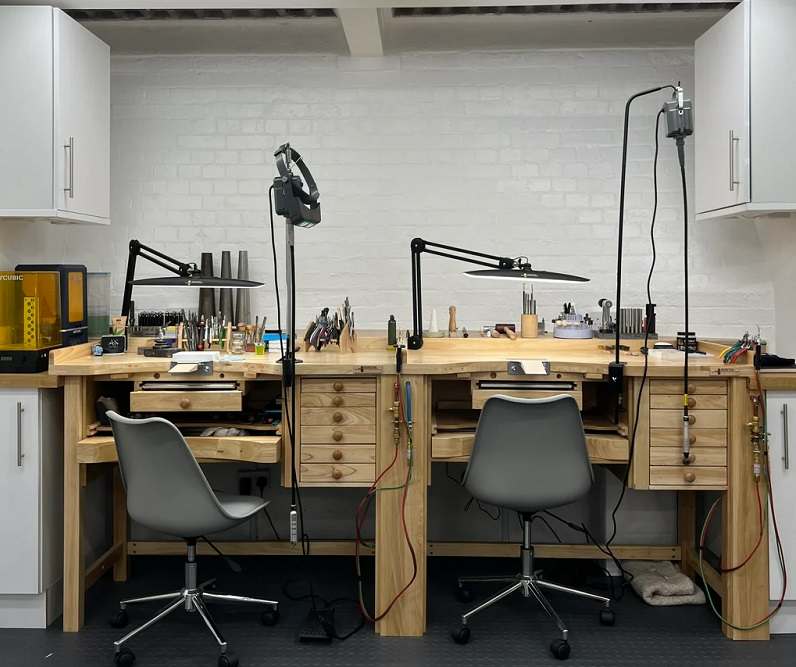Leopard Jewelry Atelier stands as a distinguished and highly regarded name in the global jewelry sector, based in Switzerland. The renowned Leopard Goldsmith Atelier excels in the art of creating a wide range of exquisite jewelry, including rings, bracelets, necklaces, earrings, birthstone jewelry, and exquisite pieces adorned with precious gemstones like diamonds, emeralds, sapphires, and more. Additionally, they provide custom jewelry services to cater to individual preferences. With their extensive expertise in jewelry craftsmanship, impeccable customer service, and reliable repair solutions, Leopard Jewelry Atelier ensures that their clients receive unparalleled, top-notch designs that are both unique and of the highest quality.
Launching ventures such as a jewelry business, training to become a goldsmith, or opening a jewelry store necessitates meticulous planning and adherence to certain steps. Boasting over two decades of success in the industry, Leopard Jewelry Atelier offers expert advice on establishing and outfitting a jewelry-making workshop. Additionally, we provide insights into breaking into the profitable jewelry retail market and navigating the complexities of the global gold and jewelry trade.
Leopard Jewelry Atelier provides answers to commonly asked questions regarding the detailed process of starting and equipping a goldsmith workshop, the steps involved in start a jewelry business, and strategies for entering the highly competitive jewelry marketplace.
1- How to Start Jewelry Business and Become Goldsmith?
2- What tools and machinery are needed to set up a goldsmith workshop and Start Jewelry Business?
3- How much capital is required to a Start Jewelry Business?
4- What is the income potential of the Jewelry Business profession?
5- How much space is suitable for a jewelry store and goldsmith workshop?
Page table of contents
The narrative of the jewelry business is deeply rooted in the universal language of love.
Since time immemorial, the act of presenting gifts has been a profound expression of affection within human societies. The jewelry business, in particular, has capitalized on this tradition, transforming symbols of love into treasured commodities. Early exchanges ranged from the sharing of rare fruits, the gifting of exotic animal skins, to the crafting of wearable items from these materials. However, it was the creation of jewelry from bones, precious stones, and metals that truly captured the essence of enduring and rare beauty, thus elevating its status in the realm of gifts. This marked the genesis of the jewelry trade.
As civilizations advanced, the discovery and use of various metals and gemstones began to play a pivotal role. Gold and silver, esteemed for their lustrous allure and scarcity, were fashioned into jewelry through the art of heating, bending, and sculpting. These practices laid the foundation for the jewelry business as we know it.
With the rise of structured societies and the establishment of trade, these precious metals took on the dual role of both adornment and currency, becoming emblems of affluence and influence. The practice of bestowing jewelry made from such materials became a testament to the depth of one’s love and commitment.
In contemporary times, the jewelry business has burgeoned into a vast and dynamic industry. Jewelry, gold, and other precious materials now stand as some of the most desirable commodities worldwide. This article will guide you through the intricate journey a piece of jewelry undergoes within the business: from the conceptual design to the final product that graces the display cases of retailers, every step echoes the enduring legacy of love that has fueled the industry from its inception.
Different sectors of the jewelry industry include:
1- Gold mining, extraction from mines, and gold recycling sector.
2- Gemstone mining, including diamonds, emeralds, sapphires, turquoise, citrine, and others.
3- Gemstone cutting and faceting industry.
4- Manufacturers specializing in equipment, machinery, and supplies for the goldsmithing and jewelry business sector.
5- Jewelry manufacturing companies.
6- Providers of tools, machinery, and consumables for the goldsmith and jewelry business.
7- Gemstone wholesale distributors.
8- Merchants of gold bars, gold bullion, silver, and platinum.
9- Wholesale jewelry distributors.
10- Jewelry repair, engraving, and plating service providers.
11- Jewelry designers and artisans.
12- Jewelry retail outlets.
Across these sectors, millions of individuals engage in daily operations to craft exquisite and luxurious pieces, perfect for gifting, commemorating special occasions, or representing a valuable investment for oneself or loved ones.
1- How to Start Jewelry Business and Become Goldsmith?
1- Jewelry Design
The art of jewelry design represents a critical phase in the journey of a goldsmith, and it serves as the creative bedrock of the jewelry business. The fusion of traditional craftsmanship and modern technology has revolutionized this stage. Designers today harness cutting-edge tools like computer-aided design (CAD) software and 3D printing to bring intricate and exquisite designs to life with unprecedented precision.
The process typically begins with hand-drawn sketches that capture the initial concept of the piece. These sketches lay the groundwork for what will become a tangible symbol of artistry. The designer then employs sophisticated software such as ZBrush, Matrix, or Rhino to translate these two-dimensional ideas into fully realized three-dimensional models. This digital environment provides a virtual canvas where every curve and contour can be meticulously sculpted.
By utilizing these advanced technologies, jewelry designers in the business can iterate rapidly, adjusting and refinements to their digital prototypes. This ensures the final piece is not only beautiful but also structurally sound and ready for the intricate process of goldsmithing. Such innovation and attention to detail in the design phase are essential for anyone looking to succeed in the competitive world of the jewelry business.
2- Advancing Mold Creation and Rubber Molding in the Jewelry Business
The process of mold making, and rubber molding has long been a cornerstone of the jewelry business, bridging the gap between initial design and final product. Traditional jewelers would painstakingly craft an original design by hand, employing time-honored techniques such as engraving, welding, and hammering, working meticulously with precious metals like gold and silver. Upon completion of the masterwork, a mold would be crafted using silicone materials, with rubber molding playing a pivotal role in the waxing and branching stages of the casting process. Additionally, intricate patterns were once carved directly onto special wax molds with fine engraving tools, destined for transformation into original gold and silver models through the ancient arts of melting and casting.
In today’s jewelry business, the advent of 3D printing technology has revolutionized these traditional methods. Now, jewelry designers can conceive and execute complex, finely detailed models using advanced 3D design software such as ZBrush, Matrix, and Rhino. These digital designs are brought into the physical realm using high-precision, jewelry-specific 3D printers that cater to the unique demands of the industry.
It’s important to note the versatility of these 3D printers, which utilize resins of varying properties. One such resin hardens into a form that is durable, capable of withstanding the high temperatures and pressures involved in the mold making and rubber molding processes for gold. These are known as ceramic resin models, and they are integral to modern jewelry making, allowing for the seamless creation of intricate pieces that carry on the legacy of the jewelry business with a blend of time-honored craftsmanship and cutting-edge technology.
The second type of resin used in the contemporary jewelry business is the special wax resin. These resins are engineered to burn away cleanly and completely during the heat-curing process in a casting plaster furnace, leaving behind no residual ash. This property makes them ideal for direct jewelry casting, allowing for the creation of precise and detailed pieces that truly embody the designer’s vision.
Once the casting process is complete, the newly formed metal model can serve as the basis for mold making and rubber molding. This step is critical as it enables the mass production of the jewelry piece, ensuring that each replica maintains the intricate details of the original design. This method exemplifies the synergy between traditional craftsmanship and modern technology, a hallmark of innovation in the jewelry business. The ability to transition from a digital design to a tangible, wearable work of art with such finesse is what keeps the industry at the forefront of luxury and precision.
3- The Craft of Jewelry Casting in the Jewelry Business
Jewelry casting, a refined form of precision casting, has become increasingly significant in the jewelry business. A practice with a rich heritage stretching back thousands of years, jewelry casting is renowned for its ability to yield exquisitely detailed and precise metal components with minimal waste. The following is a condensed guide to the jewelry casting process, a critical method in the production of fine jewelry:
Wax models are created through the artful process of manual wax carving or by using a mold and a wax injector. This stage may include the intricate task of stone setting within the wax model and the addition of branching for subsequent casts.
The investment plaster process encapsulates the wax models and branches, with a keen focus on the elimination of air bubbles to ensure a flawless outcome.
The dewaxing phase takes place in a dewaxing muffle, followed by the burnout of the casting investment within a muffle furnace, which preps the mold for metal pouring.
Precious metals such as gold and silver are melted and then carefully injected into the sprue mold, capturing the design’s complexity.
After the metal has solidified, the investment casting is meticulously cleaned and removed to isolate the jewelry piece from the surrounding investment.
The resulting jewelry pieces, now separated from the tree-like structure of sprues, are trimmed and prepared for the initial stages of the polishing process.
The jewelry casting process is a testament to the industry’s dedication to merging artisanal skill with efficiency. It highlights the jewelry business’s commitment to preserving the integrity of traditional craftsmanship while embracing advancements that enhance and refine the production process. This balance of history and innovation is what allows for the creation of not just jewelry, but legacies worn and cherished over time.
4- Refinement in the Jewelry Business: The Polishing Process
Achieving the perfect finish on a piece of jewelry is paramount in the industry, and it’s the polishing stage that brings out a piece’s true beauty, aligning with the designer’s original vision. The polishing process transforms the jewelry’s surface, utilizing a blend of hand tools, advanced machinery, and a variety of brushes, alongside an array of chemical agents. This meticulous step not only imparts a radiant and mirror-like finish but also eradicates any superficial imperfections such as scratches or marks that may detract from the jewelry’s allure.
A spectrum of finishing techniques is employed within the jewelry business to achieve the desired outcome:
Acid Washing: A method to strip away oxides that may have formed during the casting process.
Mechanical Polishing: Making use of tumblers and magnets to achieve a uniform, glossy finish.
Bombing: A targeted chemical process to peel away surface layers from gold pieces.
Grinding and Filing: This involves shaping and smoothing the piece using various files and a flex shaft motor, complemented by brushes and sandpaper in multiple levels of coarseness.
Machine Polishing: Employing a dedicated jewelry polishing machine along with an assortment of chemical compounds and polishing pastes to attain a high sheen.
Electrochemical Polishing: Combining a chemical solution with electricity to meticulously refine the gold’s surface.
Ultrasonic and Steam Cleaning: Final cleaning techniques to eradicate any lingering dirt and chemical residues from the polishing stages.
In the jewelry business, polishing is more than a mere step; it is the culmination of art and technique that ensures each piece not only sparkles but also meets the high standards of craftsmanship and aesthetic appeal that customers expect.
5- Elevating Elegance in the Jewelry Business: The Art of Stone Setting
In the realm of jewelry crafting, the process of stone setting is a pivotal step that showcases the splendor of gemstones, elevating the piece’s overall elegance and value. The industry reveres a diverse array of gemstones, including the timeless allure of diamonds, the rich hues of rubies, emeralds, and both blue and red sapphires, as well as the unique charm of turquoise, pearls, amethyst, opal, aquamarine, citrine, onyx, and agate. Each stone, with its distinct characteristics and beauty, plays a crucial role in defining the jewelry’s aesthetic.
The artistry of stone setting employs various techniques to accentuate these precious and semi-precious stones. Renowned methods such as bar setting, bezel setting, prong setting, and pave setting, among others, are not just about securing the stones in place; they are about complementing and enhancing the stones’ natural allure.
Executing stone setting, particularly with diamonds and smaller stones, is a task that demands the utmost precision and care. Craftsmen must balance the pressure applied during setting to avoid damage, such as chipping or cracking, both to the stones and the jewelry itself. High-precision tools are indispensable in this process. The use of a microscope for stone setting, along with specialized instruments like an air graver and engraving pen, allows for meticulous placement and securement of the stones.
However, it’s essential to wield these tools with a skilled hand, as any misuse can lead to unintended scratches or marks on the jewelry, detracting from the piece’s flawless finish. In the jewelry business, stone setting is not merely a technical step but a form of artistry that requires a harmonious blend of precision, patience, and a delicate touch, ensuring that each jewelry piece achieves its intended grandeur and perfection.
6- Refinement in the Jewelry Business: The Art of Plating
Plating represents a pivotal and final stage in the jewelry-making process, essential for setting the piece’s ultimate color and achieving the highest level of radiance. This procedure entails the application of a substantial layer of either 24-carat gold, which is noted for its vivid golden yellow hue, or rhodium metal, distinguished by its strikingly bright white color, onto the jewelry through an electrochemical plating process. The operation utilizes specific tools, including transformers designed for the electrolytic plating of various metals like yellow gold, rhodium, and ruthenium, alongside specialized glassware, cleaning agents, ultrasonic cleaners, steamers, polishing machinery, and diverse grades of brushes for a perfect finish.
Here is a corrected and detailed explanation of the jewelry plating process:
Surface Polishing: Initially, the jewelry’s surface is carefully polished to achieve a high degree of smoothness.
Ultrasonic Cleaning: The jewelry is then thoroughly cleaned using an ultrasonic cleaner to ensure all contaminants are removed.
Electro Degreasing: At this juncture, the pieces are immersed in a degreasing solution to eliminate any traces of grease and surface dirt.
Distilled Water Rinse: Following the degreasing step, the jewelry is rinsed with distilled water to remove any residue from the cleaning solution.
Electrolytic Plating: The jewelry is placed in an electrolyte solution for the plating process, which meticulously coats the piece with a layer of gold or rhodium.
Second Distilled Water Rinse: After the plating, a second rinse with distilled water is conducted to cleanse the jewelry of the electrolyte solution.
Steamer Drying: The final step involves thoroughly drying the jewelry with a steamer, ensuring a spotless and moisture-free finish.
In the competitive jewelry business, the plating process not only serves to beautify the product but also to protect it, ensuring that each piece showcases the durability and aesthetic appeal that customers desire. This attention to detail in every step reinforces the brand’s reputation for excellence and commitment to delivering jewelry that stands the test of time.
7-The Essence of Craftsmanship: Quality Assurance in Jewelry Business
Upon the completion of a jewelry piece, the subsequent phase in the manufacturing sequence is the meticulous quality control process. In this crucial step, skilled jewelers meticulously examine the newly crafted item for any imperfections, confirming that it aligns precisely with the high-quality standards that the industry and their clientele demand.
Jewelry professionals employ a keen eye and precise tools to scrutinize each piece, assessing aspects such as the integrity of settings, the polish, symmetry, and any other criteria specific to the design. This evaluation ensures that every piece of jewelry not only reflects the artistic vision but also embodies the reliability and excellence synonymous with the jeweler’s brand.
In the jewelry business, this level of rigorous quality control is not just a procedure; it is a testament to the brand’s commitment to excellence and customer satisfaction, reinforcing its reputation for offering only the finest jewelry to the market.
8. Preservation and Presentation: The Final Touches in Jewelry Business
Once the jewelry creation process is complete, the next critical step is its preservation and presentation through proper storage and packaging. Jewelry must be carefully housed in specialized, quality boxes that safeguard the delicate items from scratches or any other potential harm. These protective containers not only serve as a preventive measure but also as a means to convey the jewelry in an elegant and professional manner to customers.
The artful packaging of jewelry is a vital aspect of the customer experience, reflecting the brand’s attention to detail and dedication to maintaining the integrity of each piece. It is the brand’s final opportunity to make a lasting impression, enhancing the unboxing experience and ensuring that the beauty of the jewelry is matched by the beauty of its presentation. For any discerning jewelry business, the investment in quality storage and packaging is a reflection of the esteem in which they hold their craft and their clients.
2- What tools and machinery are needed to set up a goldsmith workshop and Start Jewelry Business?
Embarking on the trade of jewelry making requires more than just skill and creativity; it necessitates the right arsenal of tools and machinery to enhance the quality and accuracy of the crafted pieces. The proper equipment can elevate the precision of the work, resulting in jewelry that exemplifies the pinnacle of craftsmanship. Below, we will delve into some of the essential instruments and devices required to equip a proficient goldsmith’s workshop:
In the jewelry industry, the significance of utilizing the correct tools cannot be overstated, as they are the cornerstone of transforming raw materials into wearable works of art. These tools not only streamline the manufacturing process but also allow for the meticulous detail and high standards that customers expect from a premium jewelry business.
1- Crafting Precision: Essential Hand Tools in the Jewelry Profession
In the realm of jewelry making, an array of hand tools is indispensable for the meticulous crafting process. This toolkit comprises a variety of implements including files, pliers, precision scales, cluster molds, rolling mills, drills, and more. Such instruments are integral for meticulously shaping metal components, gemstones, and other precious materials. For a jeweler, investing in high-quality, precision-made tools is non-negotiable; it is the key to fabricating intricate and sophisticated designs that meet the expectations of discerning customers.
Within the jewelry business, the caliber of one’s tools is directly proportional to the quality of the finished product. By equipping artisans with top-tier tools, jewelry brands can ensure that each piece reflects their commitment to excellence and stands as a testament to their craft in a competitive market.
2- The Artisan’s Arsenal: Essential Casting Tools for Jewelry Artistry
Casting stands as a pivotal process in the art of jewelry making, requiring a comprehensive set of tools that are integral to crafting exceptional pieces. The following is a curated list of essential jewelry casting tools and equipment:
Flexible jewelry rubber molds and precision models for accurate castings.
Sophisticated 3D printers for detailed design realization.
Machines for creating durable vulcanized silicone rubber molds.
Wax injectors, both manual and automatic, for mold making.
Equipment for mixing and degassing investment plaster, ensuring bubble-free casts.
Dewaxing furnaces specifically designed for jewelry pieces.
Burnout muffle furnaces for thorough mold preparation.
Advanced vacuum or centrifugal casting machinery, along with automated options, for efficient production.
High-pressure water jets for meticulous removal of plaster after casting.
Bombing machinery tailored for jewelry post-processing.
A suite of gold melting apparatus, including oxygen-propane capsules, induction furnaces, and electric smelting ovens for various metals.
Magnetic polishers for a seamless polish on metal surfaces.
High-performance jewelry polishing machines for a superior finish.
Tumblers for bulk polishing, ensuring consistency and luster.
An assortment of brushes and specialized polishing compounds for every finishing need.
Ultrasonic cleaners and steamers for the final touch of cleanliness and shine.
In the jewelry business, these tools not only streamline the production process but also ensure that each piece achieves the highest standard of quality and beauty. By equipping their workshops with these essential casting tools, jewelers can reliably produce intricate and captivating jewelry that stands out in the competitive luxury market.
3- The Jeweler’s Essential Stone Setting Toolkit
Stone setting is an art that requires precision and creativity, essential for embedding gemstones seamlessly into jewelry designs. The tools for stone setting are designed for intricate engraving, precise cutting, and the delicate task of securing gemstones onto jewelry. Below is a list of indispensable stone setting tools that are critical for jewelers:
- Flexible shaft rotary tools for detailed carving and engraving.
- A variety of files to shape and refine the metal settings.
- Pushers for expertly placing and securing stones.
- Several types of brushes for cleaning settings and polishing stones.
- Drills of different sizes and types for creating mounting holes.
- Air gravers for precision engraving with controlled air pressure.
- Magnifying tools such as microscopes and loupes for detailed work.
- Bezel tools for wrapping stones with a thin metal strip.
- Needle files for reaching into tight spaces and fine-tuning the setting.
- Ring clamps to hold jewelry pieces securely during setting.
- Gravers for hand-cutting and shaping metal.
- Pin vices for a firm grip on small components during intricate work.
In the realm of jewelry business, stone setting tools are not just instruments; they are extensions of the jeweler’s hand, allowing for the creation of beautiful, durable, and precise jewelry pieces. Each stone set securely and each design executed flawlessly contributes significantly to the reputation and success of a jewelry brand.
4- Refining Elegance: The Craft of Jewelry Plating
The plating process is a pivotal and concluding step in the creation of jewelry, serving to impart the final color and enhanced brilliance to each piece. Jewelry plating, a meticulous chemical process, involves the application of a substantial layer of 24-carat gold, exuding a rich yellow hue, or rhodium, offering a sleek white finish, onto the jewelry item. The essential tools and equipment for executing this delicate process include:
- Jewelry plating rectifier: A critical device that supplies the necessary electrical current for the plating process, ensuring a consistent and controlled application of the metal coating.
- Jewelry plating tank and anode: The vessel where the plating magic happens, paired with an anode that assists in the electrolytic deposition of the metal onto the jewelry.
- Jewelry plating solution: A specially formulated chemical bath containing the desired plating metal, which will adhere to the jewelry’s surface.
- Ultrasonic cleaner: Employed to meticulously clean jewelry before plating, using high-frequency sound waves to remove any dirt or oils that could impede the plating quality.
- Jewelry steam cleaner: A device for the final cleansing after plating, using steam to strip away any leftover contaminants and polish the piece to a gleaming finish.
- Jewelry Polishing machine: An essential tool for preparing the jewelry pre-plating and for buffing it post-plating, ensuring that each piece achieves the desired shine and smoothness.
In the jewelry business, the caliber of plating can elevate a piece from merely attractive to truly luxurious. Mastery of these tools is essential for jewelers who seek to deliver superior quality and durability in their work, thereby securing their position in a market where excellence and detail are the cornerstones of desirability.
5- Elevating Artistry with High-Tech Tools in the Jewelry Industry
The creation of complex and exquisite jewelry designs necessitates the employment of advanced marking and engraving lasers, alongside CNC machinery. These high-tech tools are pivotal for executing precise cutting and intricate engraving, allowing jewelers to produce distinctive and elaborately detailed jewelry.
Marking and engraving lasers focus a concentrated beam of light to etch designs with impeccable accuracy, making them ideal for custom engravings and delicate patterns. CNC machines complement these lasers by providing the capability to automate the carving process, ensuring consistency and precision across multiple pieces.
In the competitive world of the jewelry business, leveraging such advanced technology serves as a significant advantage. It not only enhances the range of design possibilities but also increases efficiency and quality control. For jewelers, this means the ability to offer clients personalized and finely-crafted pieces that showcase the pinnacle of modern jewelry design and craftsmanship.
6-Safety tools and equipment
In the jewelry business, keeping employees safe and preventing accidents is very important. Therefore, safety equipment such as safety glasses, protective gloves, breathing masks, safety shoes and fire extinguishers should be available to prevent any possible injuries and accidents.
7-Equipment and tools for maintaining and displaying products
For the optimal presentation and preservation of your crafted jewelry pieces, a variety of display solutions such as elegant boxes, organized trays, stylish display stands, sophisticated shelves, and lifelike jewelry shop mannequins can be utilized. These tools are instrumental in exhibiting the jewelry attractively and methodically, capturing the attention of potential customers and enhancing their shopping experience.
Employing such high-quality display equipment is crucial in the jewelry business, as it not only safeguards the items but also elevates the perceived value of the jewelry. By showcasing products in the best possible light, jewelers can create a visually appealing environment that entices customers and highlights the unique beauty of each piece.
8-Measuring tool
In jewelry production, accuracy in weight measurement is very important. To accurately measure the dimensions and weight of jewelry, you should use accurate laboratory scales and accurate Gemstones identification tools.
3- How much capital is required to a Start Jewelry Business?
Embarking on a jewelry business journey entails a thorough analysis of various financial aspects. The capital needed to launch such a venture is contingent upon several pivotal cost factors, which are outlined as follows:
Equipment Investment: This includes the cost of acquiring and installing the necessary machinery for gold production, hand tools, and other specialized apparatus required for the crafting of jewelry.
Materials Expense: The procurement of gold, alongside other essential consumable materials and primary resources necessary for creating gold products, represents a significant portion of the initial costs.
Premises Rental: Securing a location for your jewelry business will entail rental costs, which should be accounted for in your financial plan.
Personnel Overheads: This covers the remuneration for the skilled labor force operating within your establishment, encompassing both salaries and wages.
Licensing and Compliance Costs: Launching a jewelry business requires navigating legal channels to acquire the appropriate permits and licenses, often incurring additional fees.
Marketing and Outreach Expenditures: In order to engage customers and effectively market your products, budgeting for advertising, marketing campaigns, and the creation of a dedicated website is essential.
For a small-scale jewelry business, the estimated capital requirement can lie anywhere between $50,000 and $100,000. It is important to highlight that in the realm of jewelry making, gold and gemstones are the primary consumables and will consistently be a major investment focus as your business progresses.
4- What is the income potential of the Jewelry Business profession?
The income potential in the jewelry business profession can be substantial, with several factors influencing the level of profitability a jeweler or goldsmith might achieve. These factors include the artisan’s skill level, creativity, reputation, the quality of materials used, market demand, branding, and the ability to reach and maintain a customer base.
Skill and Expertise: Jewelers who possess a high level of craftsmanship and design expertise can often command higher prices for their work. Their unique designs and quality finish can attract a clientele willing to pay a premium for bespoke pieces.
Market Positioning: How a jeweler positions themselves in the market—whether catering to high-end luxury consumers or offering more affordable, accessible pieces—will impact their income. Luxury jewelers, for instance, may see larger profit margins on individual pieces.
Business Model: The choice between operating a brick-and-mortar store, selling online, or a combination of both can affect costs and income. Online businesses may have lower overhead but might spend more on marketing.
Location: Jewelers in metropolitan areas or regions with wealthier demographics may find that they can price their products higher due to increased local demand and clientele with higher disposable incomes.
Marketing and Branding: Effective marketing and strong branding can greatly increase the perceived value of jewelry, allowing businesses to charge more and build a loyal customer base.
Market Trends and Demand: The demand for certain types of jewelry can fluctuate with fashion trends, economic conditions, and the global price of materials like gold and gemstones. Those who can adapt quickly to market changes may capitalize on new opportunities.
Production Scale: Jewelers who produce pieces on a larger scale or who are able to streamline their production processes may have higher overall income due to increased sales volumes.
It’s important to note that, like any business, a jewelry enterprise can also face challenges that affect income potential, such as economic downturns, competition, and the cost of materials. Nevertheless, for those with the right combination of skill, business acumen, and market understanding, the jewelry business can be a highly rewarding profession financially.
The balance of supply and demand for jewelry within the global marketplace is a key determinant of profitability for the jewelry industry.
The interplay of supply and demand in the global jewelry market is a critical factor in shaping the revenue potential for those in the jewelry business. A robust market with a voracious demand for jewelry often leads to enhanced pricing power and, consequently, higher profits for jewelry manufacturers. Additionally, the expansion into export markets can open avenues for international sales, potentially boosting the income of a jewelry business. In the forthcoming section, we will present an overview of the top 10 countries known for their significant consumption of gold jewelry, offering insights into their market behaviors and preferences. This knowledge can be instrumental for jewelry businesses looking to target high-demand areas and optimize their income streams.
| Rank | Country | Estimated Consumption (Tonnes) |
| 1 | China | 630 |
| 2 | India | 562 |
| 3 | United States | 136 |
| 4 | Middle Eastern countries | 100 |
| 5 | Turkey | 42 |
| 6 | Russia | 40 |
| 7 | Iran | 39 |
| 8 | Thailand | 36 |
| 9 | Germany | 26 |
| 10 | Italy | 21 |
The income potential of the jewelry business profession can be quite significant, especially when considering the different margins applied in wholesale and retail sectors.
Wholesale:
In the wholesale jewelry business, the profit margins typically range from 50% to 100%. This means that if a piece of jewelry costs $100 to produce, a wholesaler would sell it to retailers for between $150 to $200. Wholesalers typically deal in larger volumes and sell to retailers rather than directly to the end consumer. The lower margin reflects the efficiency and scale of selling in bulk but also the competitive nature of selling to businesses that may be shopping around for the best prices.
Retail:
The retail sector of the jewelry business sees a higher profit margin, often ranging from 100% to 400%. This means that a jewelry piece bought at wholesale for $200 could be sold to consumers for anywhere between $400 to $1,000. Retail margins are higher to cover additional costs such as the retail space, staffing, marketing, and the personalized selling experience. Additionally, retailers can mark up prices higher due to the value-added through branding, customer service, and the luxury shopping experience.
It’s worth noting that these margins are not fixed and can vary widely based on factors such as:
- The exclusivity and branding of the jewelry
- The quality and rarity of the materials used
- The intricacy and uniqueness of the designs
- The reputation and location of the business
- The target customer demographic
The actual income for a jewelry business can also be influenced by overhead costs, competition, market demand, and the effectiveness of the business’s marketing and sales strategies. Successful jewelry businesses often combine skillful craftsmanship with savvy business practices to capitalize on the higher end of these potential margins.
5- How much space is suitable for a jewelry store and goldsmith workshop?
The ideal space for a jewelry store and goldsmith workshop can vary widely depending on several factors including the scale of operations, the range of services offered, the inventory size, and the anticipated customer foot traffic. However, there are some general guidelines that can help determine a suitable space:
Jewelry Store:
- Display Area: Adequate space for showcasing jewelry is crucial. This area needs to be well-lit and secure, with enough room for customers to browse comfortably.
- Consultation Area: A private space for discussing custom orders or viewing expensive pieces can enhance customer service.
- Point of Sale: The checkout area should have enough space for a cash register, computer, and other transactional necessities.
- Storage and Security: A secure, preferably hidden area for storing extra inventory and sensitive documents is essential.
For a small to medium-sized jewelry store, the customer-facing area might range from 500 to 1,500 square feet.
Goldsmith Workshop:
- Workbenches: Enough room for all necessary tools and equipment, with space to work comfortably.
- Machinery Space: If the workshop will house machinery for casting, engraving, or polishing, additional space will be required.
- Ventilation: Proper ventilation is critical, so extra room for safe airflow systems may be needed.
- Storage for Materials: Secure storage for precious metals and gemstones is a must.
A small workshop might be functional within a 300 to 500 square foot space, while a larger operation may require 1,000 square feet or more.
Combined Space:
For a combined jewelry store and goldsmith workshop, a space that accommodates both the retail and manufacturing aspects while ensuring a smooth workflow is necessary. This could mean a total area ranging from 800 to 2,500 square feet or more, based on the size of both operations and whether there are additional staff facilities or office space requirements.
It’s important to design the space with both functionality and customer experience in mind. Customization of the layout to fit the specific business model and brand image is also key. Consulting with an interior designer who has experience in retail and workshop planning could provide valuable insights into the most efficient use of space for a jewelry business.
Collaboration with Leopard Jewelry Atelier
Embark on a transformative journey in the jewelry industry, whether you’re aiming to launch a new Jewelry Making Business or elevate your existing brand to new heights. Leopard Jewelry Atelier stands ready to support you with expert consulting services and outfit your Jewelry Making Business with cutting-edge tools and technology.
At Leopard Jewelry Atelier, we take pride in offering an exquisite selection of jewelry for both women and men. Our collection spans from elegant pendants and vibrant birthstone gemstone jewelry to exquisite engagement rings, personalized gold nameplates, and breathtaking jewelry sets and half-sets. For those seeking a tailor-made touch, our atelier provides custom design services, allowing you to create bespoke pieces that make a truly unique and heartfelt gift.
Beyond our diverse jewelry offerings, Leopard Jewelry Atelier delivers an array of professional services, including plating, casting, laser engraving, and meticulous jewelry repairs. Our plating services breathe new life into your cherished pieces, restoring their luster and brilliance. Through casting and laser engraving, we can realize intricate designs and patterns that make your jewelry stand out. Should your treasures require repair, our skilled technicians will ensure they are restored with the utmost care.
For aficionados looking to delve deeper into the craft, Leopard Jewelry Atelier also offers comprehensive jewelry courses designed to expand your expertise in this fascinating field. With a commitment to detail and the use of only the finest materials, we provide a luxurious and exclusive experience, crafting unique and stunning jewelry pieces that captivate and inspire.
Leopard Jewelry Atelier is not just a destination for exquisite jewelry but also a dedicated advisor and ally, equipping you to make your mark in the Jewelry Making Business and succeed in the competitive global jewelry market.
FAQ: Your Guide to Starting and Growing Your Jewelry Business with Leopard Jewelry Atelier
Leopard Jewelry Atelier is committed to nurturing your entrepreneurial spirit and providing the resources you need to thrive in the dynamic world of the jewelry business. Whether you’re crafting your first piece or seeking to expand your empire, we’re here to illuminate the path to success.

































